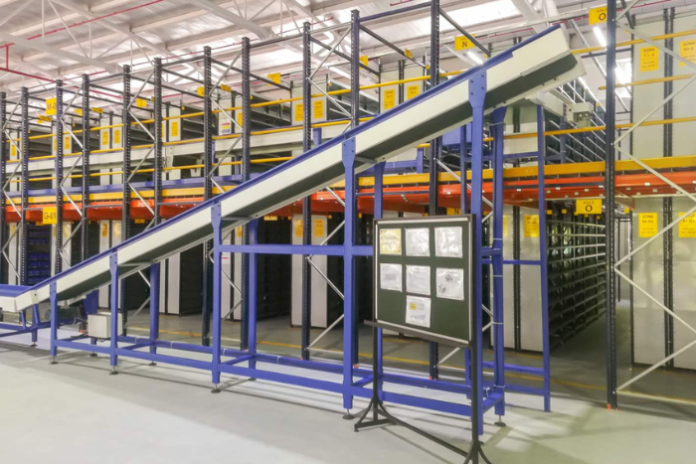A conveyor belt is a widely used solution for material movement. Conveyor belts are used in warehouses for easy and fast transportation of material from one location to another, lessenlabour costs, improve productivity, preventhuman injury and product damage while transportation and loading and unloading.
Conveyor belts are one of the most reliable and durable material handling systems used extensively in warehouses, in addition to production and manufacturing facilities at a large scale. Though as good as they are, issues have been reported with them that have often brought warehouse operations to a halt.
These issues have a domino effect that affects both productivity and loss of money due to low production. No matter how well-serviced the conveyor belt solution is, issues like material spillages, belt slippage, mistracking, and other problems are bound to occur.
Some of the problems experienced in the conveyor belt include:
Mistracking
Tracking involves managing and aligning a conveyor belt to maintain a specific path, making it easy to achieve a particular output in production.
It becomes a problem when the conveyor belt does not follow its track, which often occurs when the belt does not follow its aligned path and slips to one side or another, which shifts the entire alignment of the process to the wrong course.
Some of the common reasons for mistracking of conveyors in warehouse storage are:
· The snub rollers are out of alignment – Ensure that all the frames align with the snub roller to prevent slanting.
· A crooked conveyor frame – Check the angles to ensure squarely fitted frames.
· Dirt on the pulley or belt – cleaning your system regularly using tools such as the brit belt scrubber is essential.
· False clown – you can try checking if there are stuck materials on the pulley to ensure proper force distribution.
Belt Slippage
A conveyor belt works when there is an exact balance of tension in the line. Too little or too much tension leads to belt slippage. In most cases, the slippage occurs at the head pulley when the pulley and the belt do not have enough grip to turn the belt around the pulley. The effect is the straining of the belt due to the unnecessary stretching and loud grating noise.
Some of the most common causes of belt slippage include:
· Excessive loads – conveyor belts can only handle weight to a specific capacity depending on the overall size and the pulley. Ensure the items you use in the conveyor belt are as per the stipulated range.
· Mechanical problem – regular check of components such as the pulley is vital in preventing such unexpected situations.
· Low temperature – low temperature reduces the grip between the pulley and the belt. Choose a conveyor belt suited for your area’s temperature condition.
· Improperly installed lagging – lagging increases the belt’s grip on the pulley. If you suspect your lag is the problem, it is essential to consult a professional to fix it.
Material Spillage
Material spillage is a common occurrence, especially at transferring and loading points. Spillage problems can cause buildup or blockage of the pulley and, if not fixed, may lead to other more significant issues in the future.
Depending on the products you deal with, sometime spillage is inevitable. However, it is crucial to ensure that the conveyor belt solution is well aligned to avoid being the cause of spillage. You can install a belt plough or impact bed to help reduce the clean-up time and chances of failure due to blockage.
Blockages
Blockages are easiest to fix and are commonly caused by excess materials in the conveyor belt. When there are sharp corners, excess materials gather as they try to go through the edge, and the pile-up causes blockage.
Blockages can jam the efficient movement of the entire system, leading to decreased productivity. To prevent such issues, keep an eye on the movement of your items on the edges. Also, regularly inspect the whole line to ensure no pile-up at any stage.
Seized Rollers
Heavy-duty materials such as stainless steel help build robust conveyors. When the rollers seize up, sharp edges start to form, which can cause snags. If not fixed on time, it may seize the whole system. Safety issues arise when problems go unidentified, jeopardizing worker safety and leading to potential damage to products meant for transportation.
Regular inspection of the convey belt is essential in keeping everything in check. You can easily eliminate issues such as mistracked belts by getting a quality conveying solution from a trusted conveyor belt solution manufacturer in India.


